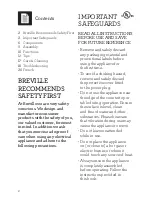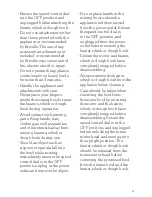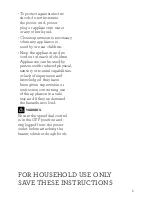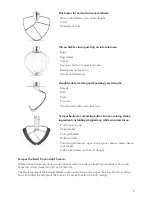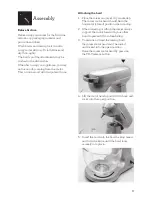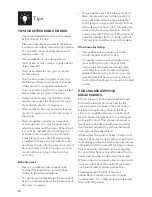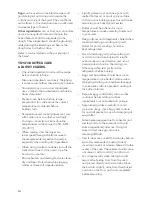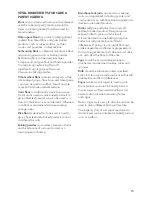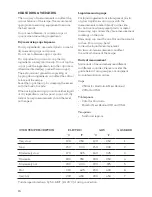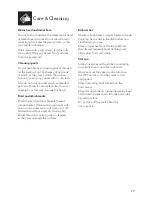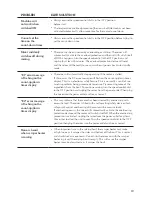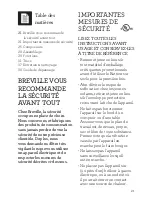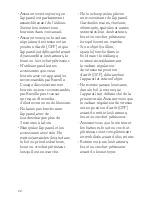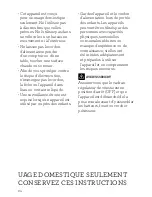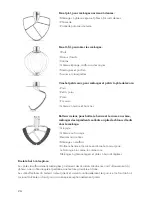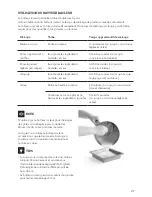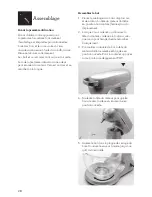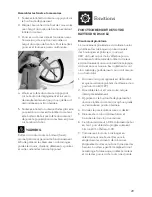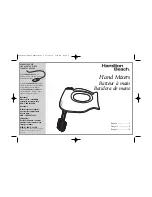
14
Eggs
can be used in some bread recipes and
provide liquid, aid rising and increase the
nutritional value of the bread. They add flavor
and softness to the crumb and are usually used
in sweeter types of bread.
Other ingredients
such as fruit, nuts, chocolate
chips, etc., required to remain whole in the
baked bread, should be suspended in the
dough. These ingredients should be gradually
added during the kneading and before the
dough rises for the first time.
Refer to contact details on the packaging of
the bread.
TIPS FOR BETTER CAKE
& PASTRY MAKING
•
Check the ingredients and read the recipe
before starting to bake.
•
Measure ingredients accurately. Weighing
is more accurate than measuring by volume.
•
Variations may occur in raw ingredients
use so adjust other ingredients and baking
times if required.
•
Preheat oven before starting recipe
preparation, this will ensure the correct
temperature is achieved before
baking starts.
•
Temperature and cooking times may vary
with some ovens so adjust accordingly.
If using a convection oven reduce the
temperatures in the recipes by 50 - 68°F
(10- 20°C).
•
When mixing, start the mixer at a
lower speed then gradually increase to
the recommended speed in the recipe
especially when adding dry ingredients.
•
When using smaller quantities turn off the
mixer from time to time and scrape the
bowl with a spatula.
•
Ensure beaters and mixing bowl are clean,
dry and free of fats when whipping egg
whites as these will impede aeration.
•
Lightly grease trays and cake pans with
melted butter, oil or an oil spray and line
with non-stick baking paper; this will make
removing your baked goods easier.
•
Butter should be softened at room
temperature to make creaming butter and
sugar easier.
•
Keep surfaces and ingredients chilled when
making, handling or rolling out pastry.
Butter for pastry making should be
kept refrigerated.
•
Avoid stretching pastry when rolling out
as it will shrink when baking. Use light,
even strokes in one direction and avoid
pressing down hard on the rolling pin.
Where possible, rest pastry in the
refrigerator before baking.
•
Eggs and egg whites should be at room
temperature to give better volume when
whipping. Adding room temperature eggs
to cake mixes will also prevent curdling of
the butter mixture.
•
Separate eggs individually into another
container before adding to other
ingredients to avoid potential spoilage.
•
Separate egg whites carefully to avoid
inclusion of egg yolks. Egg yolks contain
fat and will prevent successful whipping of
egg whites.
•
Rinse beaten egg residue from beater and
mixing bowl or other utensils with cold
water immediately after use. Using hot
water will set the egg and make
cleaning difficult.
•
Test if cakes are cooked 3–4 minutes before
end of recommended cooking time by
inserting a metal or wooden skewer into the
center of the cake. The skewer should come
out clean or with small dry crumbs on it.
•
For crisper results when baking biscuits,
remove the baking trays from the oven
and placed directly onto wire racks. Move
the biscuits slightly away from their baked
position on the trays and cool completely
before removing.


